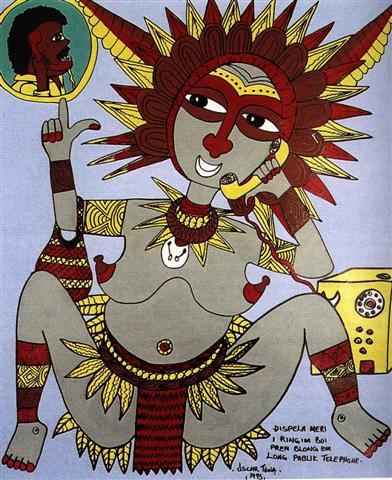470. In Manuscript E the arrival of Hotu A Matua
and Ava Rei Pua to Easter Island in a way seems to have
coincided with the place where Leo (Jupiter,
Nonoma)

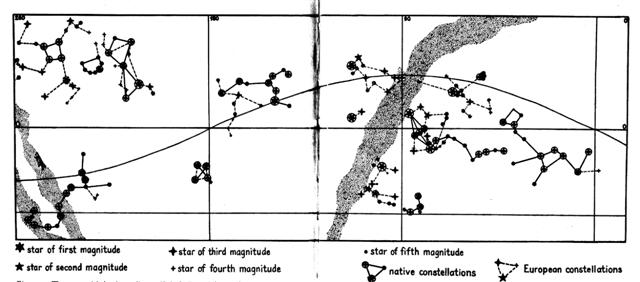
... The
canoes of Ava Rei Pua and of Hotu were
seen near the (off-shore) islets. On the fifteenth
day of the month of October (tangaroa uri)
the canoe of Hotu and the canoe of Ava Rei
Pua landed. On the fifteenth day of the month of
October (tangaroa uri), Nonoma
left the house during the night to urinate outside.
At this point Ira called out to Nonoma,
'Look at the canoe!' Nonoma ran, he quickly
went to Te Hikinga Heru (a ravine in the side
of the crater Rano Kau) and looked
around. There he saw the double canoe way out near
the (offshore) islets, and the two (hulls of the
canoe) were lashed together. He ran and returned to
the front of the house. He arrived and called into
the house: 'Hey you! This canoe has arrived during
the night without our noticing it!' Ira asked
Nonoma, 'Where is the canoe, which you say is
lying out there (in the water)?' Nonoma's
voice came back: 'It is out there (in the water)
close to the (offshore) islets! There it lies, and
the two (hulls) are lashed together.' The four of
them (corrected for 'the six of them') went out and
picked up leaves (on branches) to give signals. They
picked them up, went and arrived at Te Hikinga
and saw the canoe. Raparenga got up,
picked up the leaves, took them in his hands, and
waved, waved, waved, waved ... (E:75)

Raparenga (the yellow dance
paddle, the Moon, I have suggested) presumably waved much leaves because on Easter
Island the 'year in leaf' was arriving.
|
Sons of Hau Maka |
Sons of Hua Tava |
|
Ira |
Sun |
Kuukuu |
Mars |
|
Raparenga |
Moon |
Ringiringi |
Mercury |
|
|
Nonoma |
Jupiter |
|
Uure |
Venus |
|
Makoi |
Saturn |
The ravine (heru) where Nonoma urinated
(as Leo), and where 6 changed to 4
(= 10 - 6), was
named Hikinga suggesting a time from where the
phase of the Woman (M → W as in Cassiopeia) took over:
...
When this tremendous task had been accomplished
Atea took a third husband, Fa'a-hotu,
Make Fruitful. Then occurred a curious event.
Whether Atea had wearied of bringing forth
offspring we are not told, but certain it is that
Atea and her husband Fa'a-hotu exchanged
sexes. Then the eyes of Atea glanced down at
those of his wife Hotu and they begat Ru.
It was this Ru who explored the whole earth
and divided it into north, south, east, and west ...
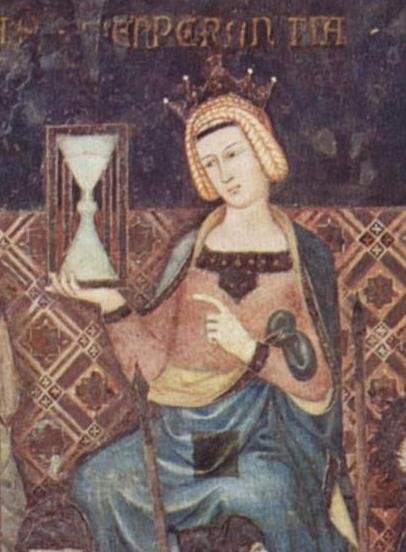
For on Mangareva (next to
Easter Island) hiki meant to commence (or to
finish) mat weaving - surely a task for women. South of the equator Land was
drawn up at the same time as Land sank down north of
the equator. The force of gravity was seemingly
overcome.
Heu.
Offspring of parents from two different tribes,
person of mixed descent, e.g. father Miru,
mother Tupahotu. Heuheu, body
hair (except genitals and armpits). Vanaga. 1.
Heheu; ivi heheu, the cachalot, bone
needle; hakaheu, spade, to shovel, to grub
up, to scratch the ground, to labor; rava
hakaheu, laborious, toilsome. 2. Hakaheu,
affair. Churchill. M. Heu, to separate, to
pull asunder; the eaves of a house; heu, a
single hair; hau. to hew; heru, to
comb; huru, hair on the body; down; feathers;
maheu, scattered; maheuheu, shrubs;
mahuru, scrub; heuea, to be separated.
Text Centre.
Hiki. To
flex the knees lightly, as used to do the youths of
both sexes when, after having stayed inside for a
long period to get a fair complexion, they showed
themselves off in dances called te hikiga haśga,
parading on a footpath of smooth stones, with their
faces painted, lightly flexing their knees with each
step. Vanaga. Tail fin G (? hiku). Churchill.
Hiki kioe (Cyperus vegetus), a plant whose
roots were eaten during times of famine and the
stems of which were used for medicinal purposes.
Barthel 2. Pau.: Hiki. 1. To fondle. Mgv.:
hiki, to dandle. Ta.: hii, id. Mq.:
hiki, id. 2. To flee. Mq.: hiki, flight.
Pau.: Fakahihiu, to scare away, Ma.: whiu,
to drive. Churchill. Mgv.: Hiki, to commence
or to finish mat weaving. Mq.: hiki, to
finish mat weaving. Churchill.
... The
brothers of Maui sat trembling in the middle of the
canoe, fearing for their lives. For now the water
was frothing and heaving, and great hot bubbles were
coming up, and steam, and Maui was chanting the
incantation called Hiki, which makes heavy
weights light
...
|
kua tupu te kihikihi |
ku kikiu |
te henua |
|
Kikiu.
Kikiu.
1. Said of food insufficiently cooked
and therefore tough: kai kikiu.
2. To tie securely; to tighten the knots
of a snare: ku-kikiu-į te hereķga,
the knot has been tightened. 3.
Figuratively: mean, tight, stingy;
puoko kikiu. a miser; also: eve
kikiu. 4. To squeak (of rats,
chickens). Kiukiu, to chirp (of
chicks and birds); to make short noises.
The first bells brought by the
missionaries were given this name.
Vanaga. Kiukiu (kikiu). 1.
To resound, to ring, sonorous, bell,
bronze; kiukiu rikiriki, hand
bell; tagi kiukiu, sound of a
bell; kikiu, to ring, the
squeeking of rats; tariga kikiu,
din, buzzing; hakakiukiu, to
ring. Mgv.: kiukiu, a thin sound,
a soft sweet sound. 2. To disobey,
disobedience; mogugu kiukiu,
ungrateful; ka kikiu ro, to
importune. Churchill. |
 |
 |
 |
|
Cb6-27 |
Cb6-28 (223 - 80) |
Cb6-29 (536) |
|
CLOSE TO THE FULL MOON: |
|
Sept 5 (248 = 104 + 144)
AL SHARAS (The Ribs) =
β
Crateris
(168.6) |
6 (329 - 80)
Al Zubrah-9 (The Mane) /
Purva Phalguni-11 (First Reddish One)
ZOSMA (Girdle) =
δ
Leonis
(169.2),
COXA (Hips) =
θ
Leonis
(169.4)
*128 = *169.4 - *41.4 |
7
φ
Leonis (170.0),
ALULA (First
Spring of the Gazelle) =
ξ,
ν
Ursae Majoris
(170.5),
LABRUM =
δ |
|
JULY 3 (184 = 248 - 64) |
4 |
5 |
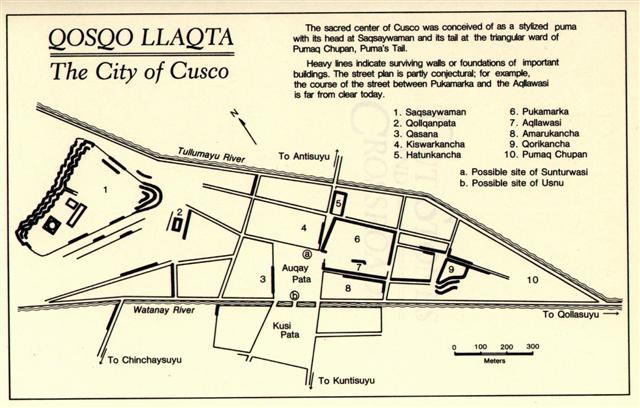 |
The form
outlined by the City of Cusco (Leo, Puma)
resembles that of Sky and Earth joining or
separating from a state of close embrace (firmly
Lashed Together):
 |
 |
|
Caban
(Earth) |
...
They were Ranginui, the Sky Father, and
Papatuanuku, the Earth Mother, both
sealed together in a close embrace. Crushed
between the weight of their bodies were their
many children, whose oppression deepened. They
yearned to be free; they fought their parents
and each other to break loose. Tuumatauenga,
virile god of war, thrust and shouted;
Tangaroa of the oceans whirled and surged;
Tawhirirangimaatea, Haumiatiketike
and Rongomatane, of wild foods and
cultivated crops, tried their best but were not
successful; and Ruamoko, god of
earthquakes, yet to be born, struggled in the
confinement of his mother's womb ... Of them
all, Taane Mahuta, the god of the
forests, was the most determined; he set his
sturdy feet upon his father's chest, and braced
his upper back and shoulders against the bosom
of his mother. He pushed; and they parted. So
the world, as the Maori understand it, came into
being
...
From the Hairy
Mane (heru) of the Lion to Antares in the Scorpion
(Ana-mua, the Star Pillar in Front)
... Liddell
and Scott (Gr.-Engl. Dict., s. v.) say: 'The root of
έτ-ερος is said to be the same as Sanskr.
ant-aras, Goth. auth-ar, Germ. and-er,
Lat. alt-er, aut, French aut-rui,
our eith-er, oth-er, itara =
alius, also in Sanskrit.' Whatever the root of
ant-aras, auth-ar, alter, it
seems to me that έκας
shows nearer kindred to
the Polynesian e, ke, ee,
ese, eze, than to forms so developed as
ant-ar, ant-ara, &c
...
there were 80 right ascension days, a
season corresponding to the time from January 1 to
March 21 (0h) for those living north of the equator. The
spring rains preceded the summer light.
...
The Maori said Rehua (Antares, Ana-mua,
the 'entrance pillar' of Tahiti) 'cooks' (ripens)
all fruit, because it inaugurated summer when it
rose in the morning sky ...
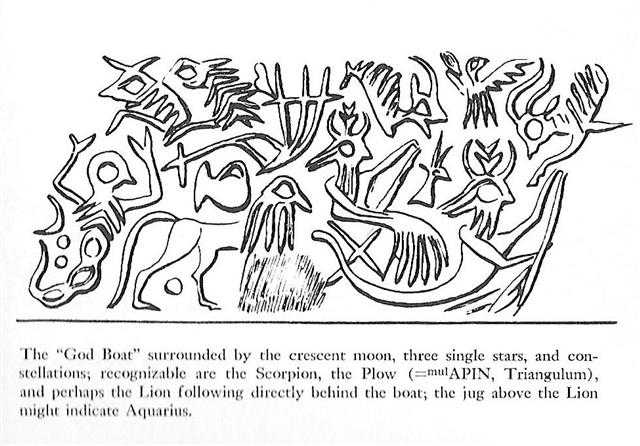
At the time of the Bull the Jug of
Aquarius poured down water in JULY 4 (185) - a date
evidently remembered in July 4th.
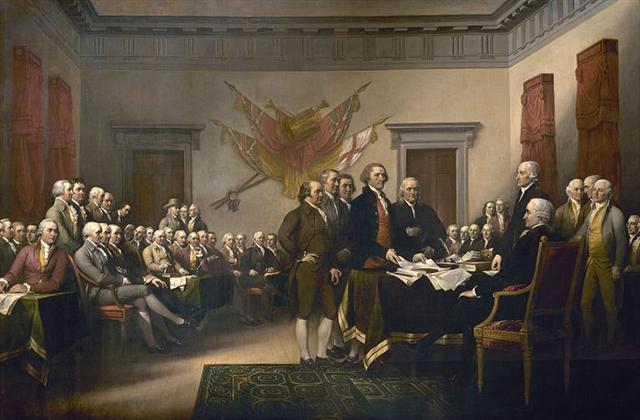
In JULY 4 the Full Moon had been in
Aquarius, with his Jug half a year away from the Sun
at Zosma
and Coxa.
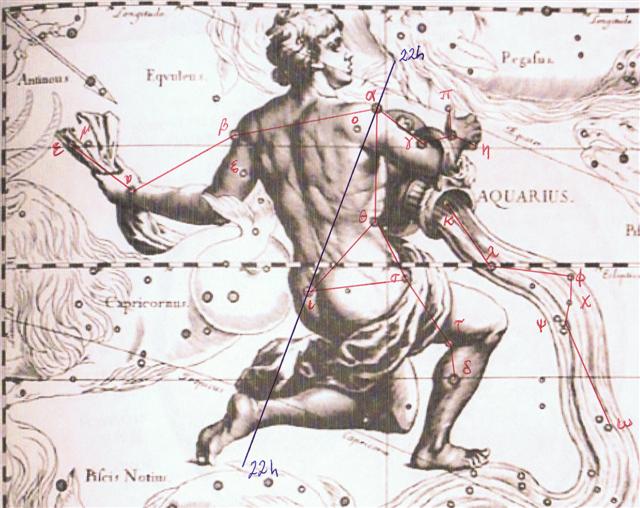
In other
words, when on Easter Island the Full Moon was seen in Leo,
people remembered this was the place where the Sun
would anciently have been at the beginning of the
2nd half of the year (as observed from a point north
of the equator).
September 6 (249) corresponded to
JULY 4 (249 - 64 = 185) and from there to October 15
(329) there were were *249 (Antares) - *169 (Zosma
and Coxa) = *80 right ascension days. 185 + 80 = 265
= autumn equinox (SEPTEMBER 22).
When the Full
Moon reached Antares the summer light had arrived,
and this was indicated with a little 'eye' (mata) in
front:
|
77 |
Te inoino |
te hau tea |
te inoino |
tagata honui kua kake
- ki te manu |
e manu piri rua |
|
Hau
= Thread, line, string, ribbon; this is
the name of the fibres of the hauhau
tree formerly used to make twine, cloth,
etc.; hau kahi, fishing line for
tuna; hau here, line for eel
trap; hau moroki, strong, tough
line, thread; hau paka, fibres of
the hauhau tree, which were first
soaked in water, then dried to produce a
strong thread.
Ha'u = Hat.
Vanaga. Hat, cord; the tree
Triumfetta semitriloba. Van Tilburg.
Ta.: The tree Hibiscus tiliaceus.
Henry. Hau. 1 a. Hibiscus. b.
Wick. P Pau.: fau, hibiscus.
Mgv.: hau, id. Mq.: fau,
hau, id. Ta.: fau, id. 2.
To contribute. Ta.: aufau, to
pay, to contribute, to subscribe. 3.
Hat, cap, helmet; hakarere ki te hau,
to take off the hat. Ta.: fauurumaa,
war bonnet. 4. Dew; hakaritorito ki
te hau, to bleach in the dew. P
Mgv., Mq.,Ta.: hau, dew. 5. To
blow freshly, coolness, zephyr,
salubrious, breeze, wind (hahau,
ahau); kona hauhau,
kona hahau, a breezy spot; ahau
ora, agreeable breeze; hakahahau,
to hang out in the air; hakaahau,
to blow. T Mgv.: hau, to blow,
blusterous, to breathe. Haua,
hoarse. (Hauha); araha hauha,
to wait for, to look forward to.
Hauhau, 1. dog (onomatopoetic). 2 a.
To scratch, to scrape, to rub. b. Wood
used in plowing fire. 3. (hau 5).
Haumaru (hau 5 -
marumaru) cool, cold. Hauł,
to replace. Hauva, twin, cut T.
Hauvaero (hau 3 - vaero)
plume, aigrette, head ornament.
Hauvarikapau (hau 3 -
varikapau) plume, aigrette, head
ornament. Churchill. Pau.: Hau,
superior, kingdom, to rule. Mgv.: hau,
respect. Ta.: hau, government.
Mq.: hau, id. Sa.: sauā,
despotic. Ma.: hau,
superior. Hauhau,
to attack. Ma.: hau,
to chop. Churchill.
Sa.: fau,
to tie together, to fasten by tying, the
tree (Hibiscus
tiliaceus)
whose bast is used for cord, the kava
strainer made therefrom, strings in
various uses;
fafau,
to lash on, to fasten with sennit;
faufau,
to fasten on, to tie together. To.:
fau,
to fasten up the hair, the name of the
hibiscus, the kava strainer made
therefrom;
faufau,
to fasten the outriggers of small
canoes; hau,
to fasten to;
fehauaki,
to tie. Fu.:
fau,
the hibiscus, the kava strainer;
fał,
fafał,
fałfał,
to attach, to tie. Niuē:
fau,
fafau,
to make by tying. Fotuna:
no-fausia,
to tie, to fasten. Ta.:
fau,
the hibiscus;
fafau,
to tie together. Pau.:
fau,
the hibiscus. Nuguria:
hau,
id. Ma.: hau,
to bind, to fasten together;
whau,
a shrub;
whauwhau,
to tie. Ha.:
hau,
name of a tree with a practicable bark.
Mq.: hau,
the hibiscus. Mgv.:
hau,
id.; hahau,
to join or tie with cords. Nukuoro:
hau,
the hibiscus, a garland. Mg.:
au,
the hibiscus. Vi.:
vau,
the hibiscus;
vautha,
to bind together. Churchill 2.
Tea. 1. Light,
fair, whitish. 2. To rise (of the moon,
the stars); ku-tea-į te hetu'u
ahiahi, the evening star has risen.
Vanaga. 1. To shine, be bright,
brilliant, white; tea niho,
enamel of the teeth; ata tea,
dawn; teatea, white, blond, pale,
colorless, invalid; rauoho teatea,
red hair; hakateatea, to blanch,
to bleach. P Pau.: faatea, to
clear, to brighten. Mgv.: tea,
white, blanched, pale. Mq.: tea,
white, clear, pure, limpid. Ta.: tea,
white, brilliant. 2. Proud, vain,
haughty, arrogance, to boast; tae tea,
humble; teatea, arrogant,
bragging, pompous, ostentatious, to
boast, to show off, haughty;
hakateatea, to show off. Mgv.:
akateatea, pride, vanity,
ostentatious, to be puffed up. Ta.:
teoteo, boastful, proud, haughty. 3.
Mgv.: teatea, heavy rain. Ha.:
kea, the rain at Hana and
Koolau. Churchill. 1. White, clear;
fair-complexioned person, often
favorites at court; shiny, white
mother-of-pearl shell, cfr. keakea,
kekea, Mauna Kea. Po'o kea,
towhead, gray-haired person. One kea,
white sand (this is shortened to ōkea
or kea, as in the expression
kea pili mai, drift gravel -
vagabond). (PPN tea). 2. Breast
milk. See Nu'a-kea. 3. A variety
of sugar cane, among Hawaiians one of
the best-known and most-used canes,
especially in medicine: clumps erect,
dense, of medium height; pith white.
Ua ola ā 'ō kō kea, living until
kea cane tassels (until the hair
turns gray). 4. Name listed by
Hillebrand for kolomona (Mezoneuron
kavaiense); see uhiuhi.
Wehewehe. KEA. adj. Haw.,
also keo, keo-keo, white,
lucid, clear; a-kea, openly,
public; au-akea, at noon, midday.
Sam.: tea-tea-vale, be pale;
ao-atea, forenoon; atea-tea,
wide, spacious. Tah.: tea, white;
teo-teo, pride, haughtiness;
atea, clear, distinct, far off.
Marqu., tea, atea, white,
broad daylight, also name of the
principal god; light generally, as
opposed to darkness. Fiji., cea-cea,
pale, deathlike; cecea, daybreak,
light of morning. Malg., tziok,
brilliant, snowwhite. Ceram (Mahai),
teen, a star. Greek, θεος,
m. θεα,
f. god, goddess, divinity generally. In
Greek, θεος
signified no god in particular, but was
applied ot almost all the gods, though
perhaps more often to the sun. As the
first gods were the sun, moon, &c.,
their brilliancy and whiteness were the
underlying sense of the names given
them. That primary sense was apparently
lost in the Greek and the other West
Aryan branches, though in the Polynesian
both the primary and derivative sense
has been preserved, as in the Marqu.
atea,
both god and light, in the Tah.
tapu-tea,
the rainbow, and the Sam.
tapu-i-tea,
the evening star ... (Fornander) |
 |
 |
 |
 |
 |
|
Cb9-22 (222 = 614 - 392) |
Cb9-23 |
Cb9-24 |
Cb9-25 (225
= 9 * 25) |
Cb9-26 |
|
CLOSE TO THE FULL MOON: |
|
Nov 24
ρ
Ophiuchi (248.1),
KAJAM (Club) =
ω
Herculis
(248.3),
χ
Ophiuchi (248.5),
SHE LOW (Market Tower) =
υ
Ophiuchi,
Tr.
Austr. (248.7), ζ Tr. Austr. (248.8) |
25 (329)
Al Kalb-16 (The Heart) /
Jyeshtha-18 (Eldest) /
ANA-MUA-1 (Entrance pillar)
ANTARES = α Scorpii
(249.1),
MARFIK (Elbow) = λ Ophiuchi,
φ Ophiuchi (249.5), ω Ophiuchi (249.8) |
26 (*250)
γ Apodis (250.1), σ Herculis (250.3), θ
Tr. Austr. (250.6), τ Scorpii (250.7) |
27 (148 + 183)
HAN = ζ Ophiuchi
(251.0) |
28 (332 = 149 + 183)
ζ
Herculis,
η
Tr. Austr.
(252.1), η Herculis, β Apodis (252.5) |
|
SEPT 21 (264 = 328 - 64) |
EQUINOX |
23 |
24 |
25 |
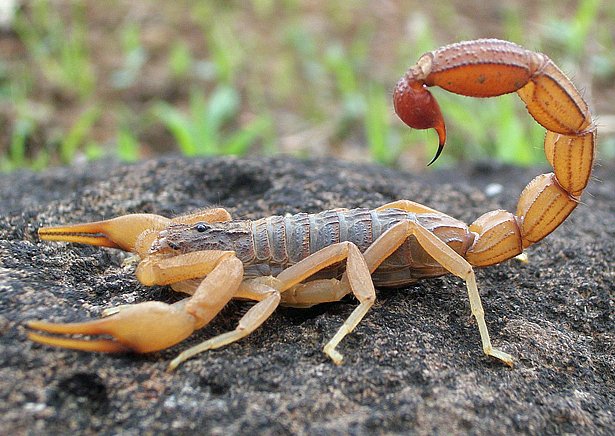 |
|
CLOSE TO THE SUN: |
|
May 25 (290 / 2)
Net-19 (Crow)
AIN (Eye) =
ε Tauri,
θ¹
Tauri,
θ²
Tauri (65.7) |
26
no star listed (66) |
27
no star listed (67) |
28 (148)
Rohini-4 (The Red One) /
Pidnu-sha-Shame-4 (Furrow of Heaven)
/
ANA-MURI-2 (Rear pillar - at the foot of
which was the place for tattooing)
ALDEBARAN = α Tauri
(68.2),
THEEMIN = υ² Eridani
(68.5) |
29
no star listed (69) |
|
MARCH 22 (145 - 64) |
23 |
24 |
JULIAN EQUINOX (84) |
26 |
 |
According to Manuscript E the
journey began 'on the second day of September',
i.e. they appear to have used the Julian equinox for defining
the length of the journey. Because the Sea from the dry
Alkes (*165) to Antares (*249) stretched for
84 days:
...
Hotu's canoe sailed from Maori to
Te Pito O Te Kainga. It sailed on the
second day of September (hora nui) ...
(E:74)
|
kotia
hia |
te kava tu |
kiore |
tu te ika |
te moko e te
hokohuki |
 |
 |
 |
 |
 |
|
Cb6-22 (137 = 529 - 392) |
Cb6-23 (615 - 85) |
Cb6-24 (223 - 84) |
Cb6-25 → 150 |
Cb6-26 |
|
Aug 31
ν Hydrae (163.1) |
Sept 1 (244)
no star listed (164 = 249 - 85)
ALTAIR (α Aquilae)
|
2
Wings-27 (Snake)
η
Octans (165.4),
ALKES (Shallow Basin) =
α
Crateris
(165.6)
*124.0 = *165.4 - *41.4 |
3
ANA-TIPU-4 (Upper-side-pillar -
where the guards stood)
MERAK (Loin) = β Ursae Majoris
(166.2),
DUBHE (Bear) = α Ursae Majoris
(166.7) |
4
11h (167.4)
χ Leonis, χ¹ Hydrae (167.1), χ²
Hydrae (167.3) |
|
... Indeed, at the rituals of
the installation, the chief is
invested with the 'rule' or
'authority' (lewaa) over
the land, but the land itself is
not conveyed to him. The soil (qele)
is specifically identified with
the indigenous 'owners' (i
taukei), a bond that cannot
be abrogated. Hence the
widespread assertion that
traditionally (or before the
Lands Commission) the chiefly
clan was landless, except for
what it had received in
provisional title from the
native owners, i.e., as marriage
portion from the original people
or by bequest as their sister's
son ... The ruling chief has no
corner on the means of
production. Accordingly, he
cannot compel his native
subjects to servile tasks, such
as providing or cooking his
daily food, which are
obligations rather of his own
household, his own line, or of
conquered people (nona tamata
ga, qali kaisi sara). Yet
even more dramatic conditions
are imposed on the sovereignity
at the time of the ruler's
accession. Hocart observes that
the Fijian chief is ritually
reborn on this occasion; that
is, as a domestic god. If so,
someone must have killed him as
a dangerous outsider. He is
indeed killed by the indigenous
people at the very moment of his
consecration, by the offering of
kava that conveys the
land to his authority (lewaa).
Grown from the leprous body of a
sacrificed child of the native
people, the kava the
chief drinks poisons him ...
Sacred product of the people's
agriculture, the installation
kava is brought forth in
Lau by a representative of
the native owners (mataqali
Taqalevu), who proceeds
to separate the main root in no
ordinary way but by the violent
thrusts of a sharp implement
(probably, in the old time, a
spear). Thus killed, the root
(child of the land) is then
passed to young men (warriors)
of royal descent who, under the
direction of a priest of the
land, prepare and serve the
ruler's cup ... the tuu
yaqona or cupbearer on this
occasion should be a vasu i
taukei e loma ni koro,
'sister“s son of the native
owners in the center of the
village'... Traditionally,
remark, the kava root was
chewed to make the infusion: The
sacrificed child of the people
is cannibalized by the young
chiefs. The water of the kava,
however, has a different
symbolic provenance. The classic
Cakaudrove kava
chant, performed at the Lau
installation rites, refers to it
as sacred rain water from the
heavens ... This male and
chiefly water (semen) in the
womb of a kava bowl whose
feet are called 'breasts' (sucu),
and from the front of which,
tied to the upper part of an
inverted triangle, a sacred cord
stretches out toward the chief
... The cord is decorated with
small white cowries, not only a
sign of chieftainship but by
name, buli leka, a
continuation of the metaphor of
birth - buli, 'to form',
refers in Fijian procreation
theory to the conceptual
acception of the male in the
body of the woman. The
sacrificed child of the people
will thus give birth to the
chief. But only after the chief,
ferocious outside cannibal who
consumes the cannibalized
victim, has himself been
sacrificed by it. For when the
ruler drinks the sacred
offering, he is in the state of
intoxication Fijians call 'dead
from' (mateni) or 'dead
from kava' (mate ni
yaqona), to recover from
which is explicitly 'to live' (bula). This
accounts for the second cup the
chief is alone accorded, the cup
of fresh water. The god is
immediately revived, brought
again to life - in a transformed
state ...
.jpg) |
Yet, the arrival was said
to be on the 15th day of October:
... The
canoes of Ava Rei Pua and of Hotu were
seen near the (off-shore) islets. On the fifteenth
day of the month of October (tangaroa uri)
the canoe of Hotu and the canoe of Ava Rei
Pua landed ...
288 (October 15) - 84 =
204 = 165 + 39 (= 399 - 360). When the
Pope Gregory XIII launched his new
calendar it was also in October 15:
... The Julian calendar day Thursday, 4
October 1582 was followed by the first
day of the Gregorian calendar, Friday,
15 October 1582 (the cycle of weekdays
was not affected) ...
288 = 2 * 144 (May
24).
|
38 |
te
hokohuki - ma te maro |
te
hokohuki ma te maro |
ka ke te
manu ki te maro |
 |
 |
 |
|
Cb8-9 |
Cb8-10 (392 + 181 = 573) |
Cb8-11 → 88 |
|
Oct 13
ε Centauri (206.3), κ Oct.
(206.4) |
14
no star listed (207) |
15 (288 = 16 * 18)
τ Bootis (208.2),
BENETNASH = η Ursae Majoris
(208.5), ν Centauri (208.7),
μ Centauri, υ Bootis (208.8) |
... The
name [Benetnash]
derives from the Arabic
phrase meaning 'The
leader of the daughters
of the bier'. The
daughters of the bier,
i.e. the mourning
maidens, are the three
stars of the handle of
the Big Dipper,
Alkaid, Mizar,
and Alioth; while
the four stars of the
bowl, Megrez,
Phecda, Merak,
and Dubhe, are
the bier ...
|
|
'Sept 16 |
17 (260 = 287 - 27) |
18 (9 * 29) |
|
"Sept 2 (245 = 286 - 41) |
3 |
4 (13 * 19) |
|
AUG 10 (222 = 286 - 64) |
11 |
12 (14 * 16 = 364 - 140) |
... The older sister of god and man,
La'ila'i, is the firstborn to
all the eras of previous creation.
By Hawaiian theory, as firstborn
La'ila'i is the legitimate heir
to creation; while as woman she is
uniquely able to transform divine
into human life. The issue in her
brothers' struggle to possess her is
accordingly cosmological in scope
and political in form. Described in
certain genealogies as twins, the
first two brothers are named simply
in the chant as Ki'i, a man
and Kane, a god. But since
Ki'i means image and Kane
means man, everything has already
been said: the statuses of god and
man are reversed by La'ila'i's
actions. She 'sits sideways',
meaning she takes a second husband,
Ki'i, and her children by the
man Ki'i are born before her
children by the god Kane
...
|

















.jpg)



